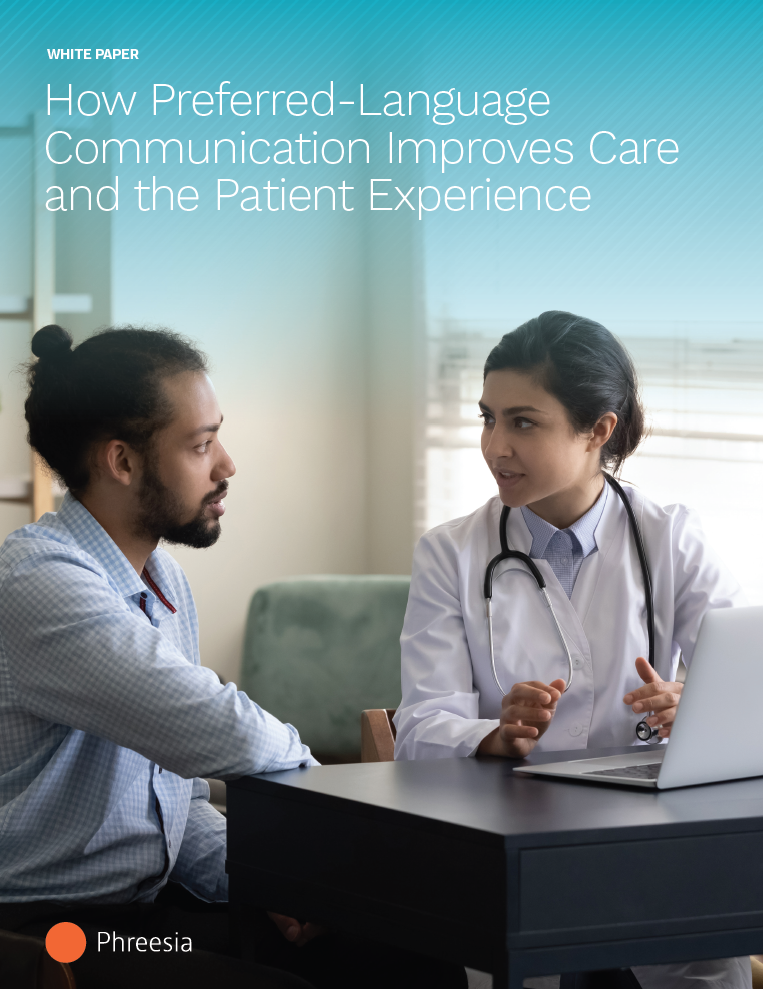The COVID-19 pandemic underscored an often-overlooked pre-pandemic challenge: the difficulties providers and organizations continue to face when interacting with patients who have limited English proficiency (LEP). Language barriers result in poor communication and experiences for patients and providers alike. In addition, patients with language barriers are more likely to require more healthcare services and to experience higher rates of adverse medical events.
However, there are simple steps healthcare organizations can take to make preferred-language communication easier for patients and providers. When organizations use patients’ language of preference, staff can be more efficient and feel more supported while patients receive more personalized care and have better experiences.
Read this white paper to learn:
- The impact of communicating with patients in their preferred language
- How preferred-language communication improves patients’ access to care
- How technology breaks down language barriers to improve care and meet patients where they are
Click the image to download the white paper.






